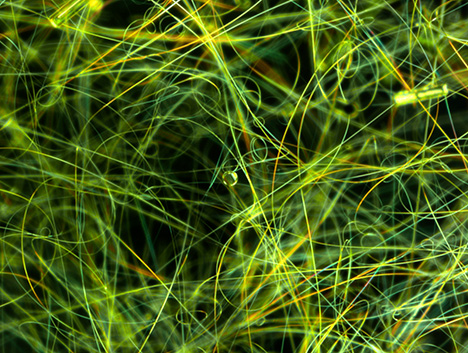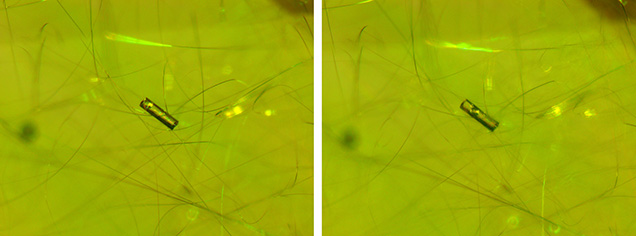Unusual “Horsetail” and Columnar Inclusions in Demantoid

Demantoid, a gem variety of andradite garnet, sometimes contains “horsetail” inclusions, a type of fibrous inclusion commonly seen in demantoid from Russia (e.g., W.R. Phillips and A.S. Talantsev, “Russian demantoid, czar of the garnet family,” Summer 1996 G&G, pp. 100–111). Recent studies have shown that these horsetail inclusions from Russian demantoid are in fact hollow tubes partially filled with serpentine (e.g., A.Y. Kissin et al., “‘Horsetail’ inclusions in the Ural demantoids: Growth formations,” Minerals, Vol. 11, No. 8, 2021, article no. 825).
Recently, the authors had an opportunity to examine a unique yellowish green demantoid weighing 0.73 ct. Horsetail inclusions often occur in a radial form, but these were quite unusual, showing random spiral- or coil-like structures throughout the stone (figure 1). Raman spectroscopic analysis identified these inclusions as serpentine. While their formation remains an open question, horsetail inclusions may suggest complicated geological conditions such as decompression (again, see Kissin et al., 2021).

Also of interest in this stone were two-phase columnar negative crystals containing mobile gas bubbles (figure 2). Based on analysis of the OH stretching region of Raman spectra (e.g., M.C. Caumon et al., “Fused-silica capillary capsules (FSCCs) as reference synthetic aqueous fluid inclusions to determine chlorinity by Raman spectroscopy,” European Journal of Mineralogy, Vol. 25, No. 5, 2013, pp. 755–763; Winter 2015 Gem News International, pp. 446–448), these inclusions were determined to be mainly composed of saline solutions, possibly a mix of water and small amounts of sodium chloride, although the composition of the gas phase was not detected.
Fluid inclusions in demantoid garnet have previously been reported (again, see Winter 2015 GNI, pp. 446–448). However, the columnar shape of the two-phase inclusions seen here is quite unusual considering the cubic crystal system of the host andradite garnet. These two-phase inclusions could be related to the formation of hollow canals within the host demantoid in the presence of water, although we are not yet able to determine how these negative crystals formed in this peculiar shape.



